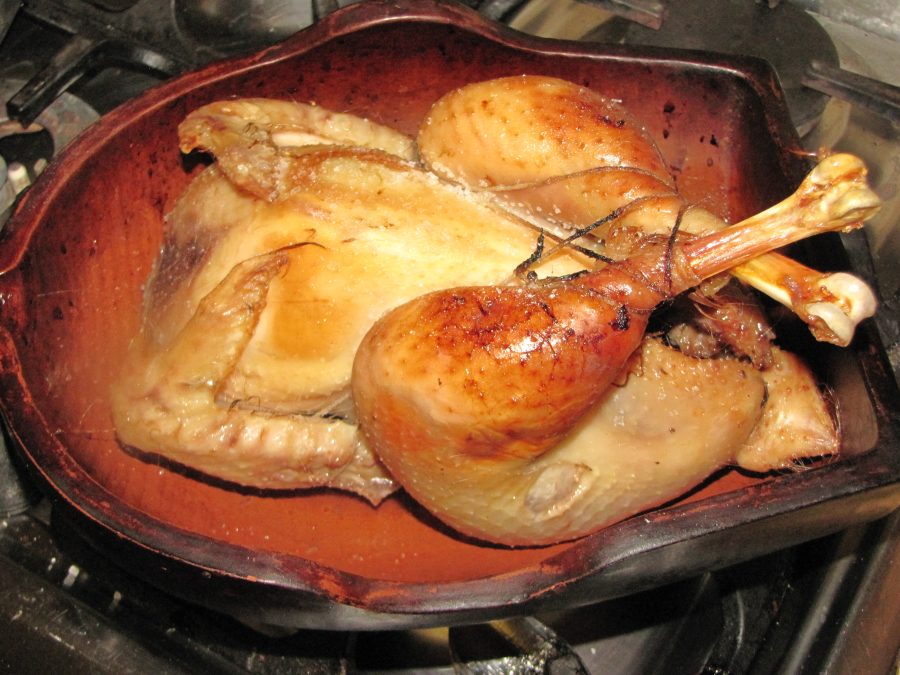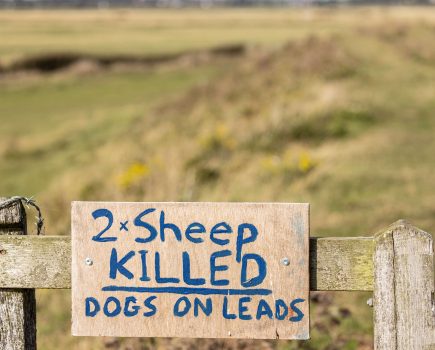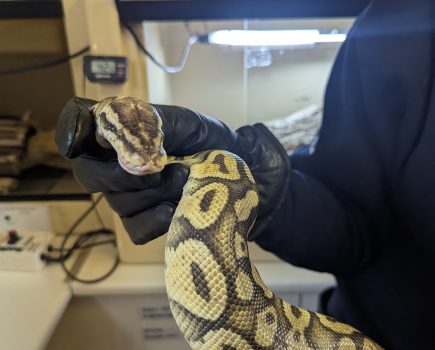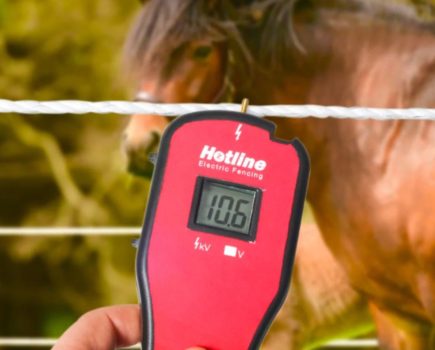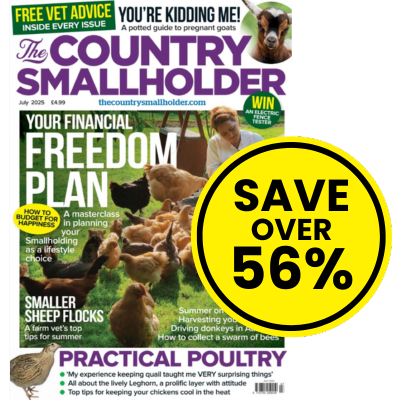Hugh & Fiona Osborne love cooking for friends and family, especially when Christmas dinner is on the menu!
Almost nothing captures the amazing diversity of skills that a Smallholder needs quite so well, as putting a self-sufficient meal on the table. Trying to make these meals has changed the way we feel about food and brought us real joy and some real insights as to how complicated a fully self-sufficient meal really is!
I imagine that most of us can identify with those Christmas meals where the poor harried cook labours in a hot and steamy kitchen, getting up at ‘sparrow’s cough’ to preheat the oven, frantically trying to balance an unfeasibly large number of pans on a suddenly tiny stove whilst cramming all manner of trays and dishes into an oven that needs at least three more shelves.
It’s bad enough trying to do all this with ingredients sourced at great expense from supermarkets, butchers and greengrocers, so surely producing it all ourselves makes it a nightmare? Well, no, but you have to understand that here, the meal will be ready when it’s ready; you see it has literally taken all year to produce.
THE CHRISTMAS (DINNER) STORY BEGINS
Like a lot of people, our first ‘baby steps’ into growing our own food was vegetables. For us this was a revelation, particularly the humble parsnip! A home-grown parsnip that is plump and freshly harvested roasted with a drizzle of honey from our own hives was completely unlike the sad, old specimens bought from a supermarket. It was sweet rather than starchy and had a fantastic flavour. Our eyes were opened to the fact that many foods available to us commercially are produced around cost, ease of transportation and reliable cropping rather than flavour and interest.
As smallholders we could produce foods that were delicious, unusual, or labour intensive that simply cannot be found in the shops. We decided to produce more of the foods we love and at least once a year, to attempt a meal that was entirely produced by us. One interesting side effect of striving to produce a whole meal is that it really brings the mantra of ‘eat local’ into sharp relief. That’s easy enough with the core vegetables. We grow the carrots, potatoes and parsnips that we need. We even grow the Brussel Sprouts that Fiona demands (Hugh detests them at a visceral level).
This leads on to the meat. As regular readers will know, we breed Buff Orpington chickens. Half of all the chicks hatched by our hens are cockerels. Given that we follow a natural breeding cycle with hens going broody in April and May, we have a lot of mature cockerels in late Autumn. We do sell a few to other breeders but most we process ourselves as table birds. The first time we did this was another eye opener! Slow grown traditional breed chickens taste totally different than fast grown broiler birds. Of course, they develop far more leg muscle and have a very different physical conformation. When we posted a photo of a roast chicken online, a veterinarian replied, “nice to see a home raised bird”.
We hadn’t mentioned that it was one of ours, but she explained that the leg development was completely different. Some of our older farmer neighbours swear that cockerels taste better although we aren’t certain about that. When we cull older birds there is even a small layer of yellow fat which I have never seen in a commercial bird, but it must have been common once as the Jewish word “Schmaltz” is literally chicken fat! Our local meat therefore is always one of our own cockerels, raised and processed right here, by us.
IT’S THE SIDES THAT MAKE IT
I don’t know about you, but I (Hugh) think that the best parts of Christmas dinner are the sauces and side dishes. They really make the difference between a Sunday roast and celebration meal. I LOVE stuffing, apple and herb, roast chestnut and the good old traditional sage and onion are all favourites. Oddly making stuffing mixes has proved remarkably easy for us because we already use a dehydrator to dry lots of fruit and vegetables. When you already have dried homegrown sage and dried onion, a few breadcrumbs and some fat quickly produce a delicious stuffing mix. However, a good alternative to cranberry sauce proved a little more tricky as cranberries really don’t like our non-acidic soil. It would be possible to acidify some soil or pot grow cranberries in ericaceous compost, but we wanted to try something more local.
Our search for a British jelly to have with poultry led to two alternatives.The first is redcurrant jelly. We grow a lot of currants and whilst redcurrant jelly is more traditional with lamb, it is excellent with chicken. An old gamekeeper gave us another solution. Sloes! His wife makes sloe jelly to eat with venison. It’s outstanding! Sharp, sweet. and almost jewel like with a clear purple colour. Honestly, it’s amazing. Do try it. I can happily publish our recipe if people are interested.
JUST DESSERTS
Trying to make a self-sufficient Christmas pudding has been quite a journey of mistakes and one that has perhaps come full circle. This started when our wonderful Opal Plum tree grew so many plums that it snapped its trunk off in a high wind, coming down on top of the electric fence that keeps the chickens in the orchard, but that’s a whole other story.
There we were with literally hundreds of ripe plums, so we thought, let’s dry them. Each plum was quartered, destoned and dried on racks in our two dehydrators. Our table, knives and hands were sticky and stained a weird orange with plum juice! As the plums dried, they gave off a sumptuous rich smell and turned a dark brown.This gave rise to a cunning plan.
“How cunning?” you might well ask. Well, truly, not very. Christmas pudding was called plum pudding for ages, wasn’t it? So, pudding was made. The dried plums were soaked in blackberry brandy and combined with home-made glace Morello cherries (super easy to make), dried raspberries, apples and more. The whole lot was incorporated into a pudding recipe and also used to make cake. Both turned out fabulously well. So where were the mistakes? Well having gone through this saga and spent some time tweaking the recipe, I discovered an article that let me know that “plums” was a word for all dried fruit and originally plum pudding was probably made with raisins! That said I have seen other research indicating that prunes (dried plums) were in fact used originally – rather like mincemeat in mince pies. I’m no historian but given that country folk would have had plum trees rather than vineyards and certainly did dry fruit, I think it’s fair to say, it’s likely that dried plums would have been used in cakes and puddings.
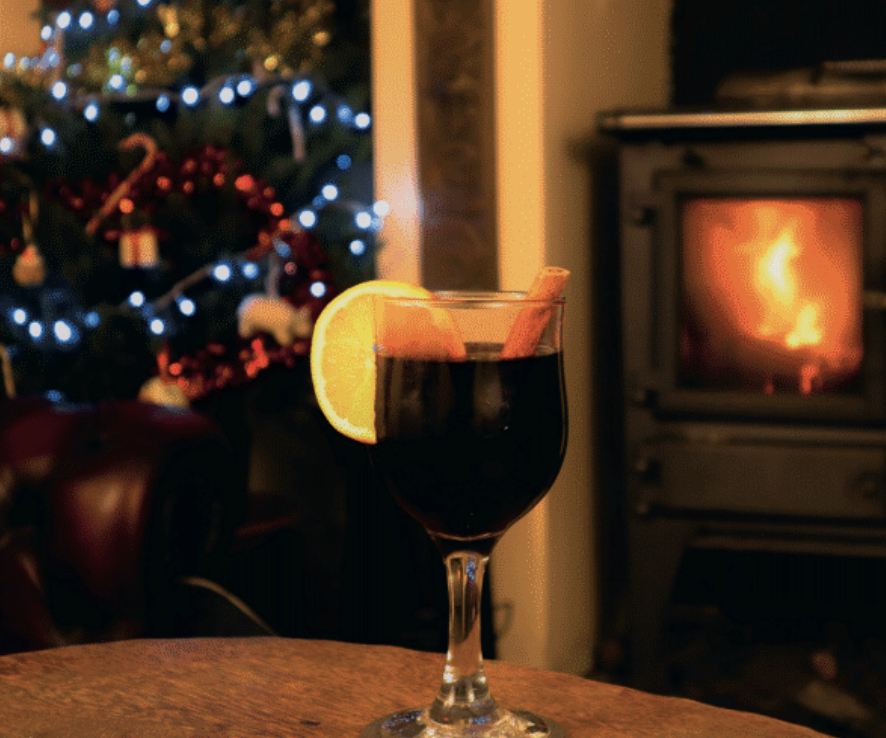
‘A JUG OF WINE, A LOAFOF BREAD – AND THOU’
For a special meal we really want to have a glass of wine and, maybe something sweet to drink with dessert too. For many of us, homemade wine has overtones of cloudy plonk made by students but, with a little time and practice, something wonderous happens. A good elderberry wine, left to mature for a few years, is rich and fruity with ample tannins to rival a good Merlot. Its reputation as a quality country wine is well deserved but there are other great choices to grace your table. If you want a light, flowery white, an elderflower wine is excellent, but for a fuller, drier wine, try a parsnip wine.
It tastes no more like parsnips than a grape wine tastes like grapes. It’s a very full, buttery rich white, almost like dry sherry. For a light rose try a chilled dry raspberry wine. It’s absolutely incredible, but you need to have a raspberry patch to make it affordable!
For later in the meal when lingering around the table, look no further than a real blackberry port. It’s rich, sweet and elegant, laden with fruit. We always offer mulled wine (and mulled apple juice for those not drinking alcohol) as well. It’s worth it just for the smell!
THE YULE LOGS…
To cook a truly self-sufficient meal we have to use a suitable fuel! Our choice in this is an Esse Ironheart. It’s a fantastic combination of heater and range cooker that keeps our cottage beautifully warm using local wood from the smallholding and our friend the tree surgeon. He delivers pruned limbs and trees felled for safety reasons and we process and season them. This surely has to be the most ecologically sound fuel for our cooking and heating, but also beautiful and cosy for our Christmas celebrations.
STILL A WORK IN PROGRESS
So, is our Christmas fully self-sufficient? Sadly not. There are some things we have tried from a self-sufficiency point of view (e.g. growing & making sugar for the redcurrant jelly), that are a great deal of work for a very limited return, and we simply don’t have the time to do them all the time. Other things that we would love to try are not allowed.
As much as we would love to make our own apple brandy, HM Customs and Revenue take a very different view, even at Christmas! We really don’t want to be martyrs to self-sufficiency. We do candy our own cherries but are very happy to open a box of chocolates. Like most people, we do what we can, but making that meal has a significance for us that has nothing to do with Hollywood ideals of perfect holiday meals. For us, our Christmas meal is a roundup of our year. Sometimes our meal will have skinnier parsnips because it’s not been a great year for roots. At other times the wine will be Lilac, not Elderflower because I got inspired by the smell in Spring. There’s always a chicken though and we get to chat about what sort of a year it’s been and our breeding plans for next year. Best of all, there are family and friends to have a glass of mulled wine and a slice of plum cake. Just don’t ask when dinner is, it will be ready when it’s ready. If you are in a hurry, put another log on the stove.
Learn how to make blackberry port here.
This article originally appeared in the December 2023 edition of The Country Smallholder.
To receive regular copies of The Country Smallholder magazine featuring more articles like this, subscribe here.
For FREE updates from the world of smallholding, sign up for The Country Smallholder newsletter here.

